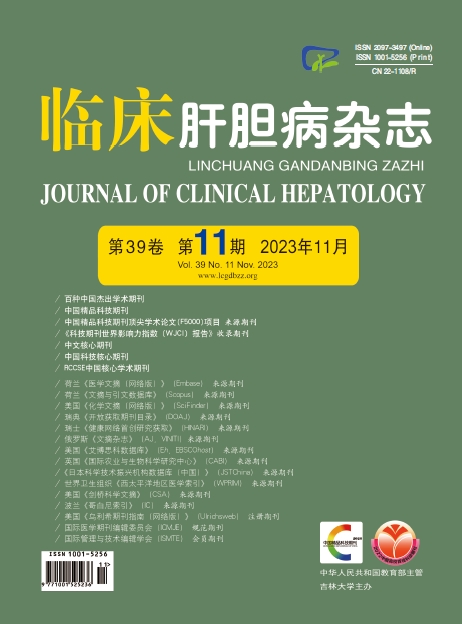| [1] |
2019 HEPATITIS B COLLABORATORS GBD. Global, regional, and national burden of hepatitis B, 1990-2019: A systematic analysis for the Global Burden of Disease Study 2019[J]. Lancet Gastroenterol Hepatol, 2022, 7( 9): 796- 829. DOI: 10.1016/S2468-1253(22)00124-8. |
| [2] |
|
| [3] |
LIU J, LIANG WN, JING WZ, et al. Countdown to 2030: Eliminating hepatitis B disease, China[J]. Bull World Health Organ, 2019, 97( 3): 230- 238. DOI: 10.2471/BLT.18.219469. |
| [4] |
WANG FS, FAN JG, ZHANG Z, et al. The global burden of liver disease: The major impact of China[J]. Hepatology, 2014, 60( 6): 2099- 2108. DOI: 10.1002/hep.27406. |
| [5] |
|
| [6] |
JIN GM, ZOU MJ, ZHANG YC, et al. Time trends, associations and global burden of intraocular foreign bodies[J]. Br J Ophthalmol, 2022, 106( 3): 435- 439. DOI: 10.1136/bjophthalmol-2020-317063. |
| [7] |
COLLABORATORS G 2 DAI. Global burden of 369 diseases and injuries in 204 countries and territories, 1990-2019: A systematic analysis for the Global Burden of Disease Study 2019[J]. Lancet, 2020, 396( 10258): 1204- 1222. DOI: 10.1016/S0140-6736(20)30925-9. |
| [8] |
KIM HJ, FAY MP, FEUER EJ, et al. Permutation tests for joinpoint regression with applications to cancer rates[J]. Stat Med, 2000, 19( 3): 335- 351. DOI: 3.0.co;2-z">10.1002/(sici)1097-0258(20000215)19: 3<335: aid-sim336>3.0.co;2-z.
|
| [9] |
YANG XB, ZOU JJ, KONG DG, et al. The analysis of GM(1, 1) grey model to predict the incidence trend of typhoid and paratyphoid fevers in Wuhan City, China[J]. Medicine, 2018, 97( 34): e11787. DOI: 10.1097/MD.0000000000011787. |
| [10] |
KABORE HJ, LI X, ALLEMAN MM, et al. Progress toward hepatitis B control and elimination of mother-to-child transmission of hepatitis B virus-World Health Organization African region, 2016-2021[J]. MMWR Morb Mortal Wkly Rep, 2023, 72( 29): 782- 787. DOI: 10.15585/mmwr.mm7229a2. |
| [11] |
REVILL P, TESTONI B, LOCARNINI S, et al. Global strategies are required to cure and eliminate HBV infection[J]. Nat Rev Gastroenterol Hepatol, 2016, 13( 4): 239- 248. DOI: 10.1038/nrgastro.2016.7. |
| [12] |
JING WZ, LIU J, LIU M. Eliminating mother-to-child transmission of HBV: Progress and challenges in China[J]. Front Med, 2020, 14( 1): 21- 29. DOI: 10.1007/s11684-020-0744-2. |
| [13] |
LIANG XF, BI SL, YANG WZ, et al. Reprint of: Epidemiological serosurvey of Hepatitis B in China: Declining HBV prevalence due to Hepatitis B vaccination[J]. Vaccine, 2013, 31( Suppl 9): J21- J28. DOI: 10.1016/j.vaccine.2013.08.012. |
| [14] |
LIU J, ZHANG S, WANG Q, et al. Prevalence of HBsAg/HBeAg amongst 1 936 801 couples preparing for pregnancy in rural China: An observational study[J]. J Viral Hepat, 2017, 24( 8): 679- 686. DOI: 10.1111/jvh.12693. |
| [15] |
LIAO XY, LIANG ZL. Strategy vaccination against hepatitis B in China[J]. Hum Vaccin Immunother, 2015, 11( 6): 1534- 1539. DOI: 10.4161/21645515.2014.980206. |
| [16] |
LIU ZX, LI MY, HUTTON DW, et al. Impact of the national hepatitis B immunization program in China: A modeling study[J]. Infect Dis Poverty, 2022, 11( 1): 106. DOI: 10.1186/s40249-022-01032-5. |
| [17] |
SU X, ZHENG L, ZHANG HM, et al. Secular trends of acute viral hepatitis incidence and mortality in China, 1990 to 2019 and its prediction to 2030: The global burden of disease study 2019[J]. Front Med, 2022, 9: 842088. DOI: 10.3389/fmed.2022.842088. |
| [18] |
ZHANG C, LIU YQ, ZHAO H, et al. Global patterns and trends in total burden of hepatitis B from 1990 to 2019 and predictions to 2030[J]. Clin Epidemiol, 2022, 14: 1519- 1533. DOI: 10.2147/CLEP.S389853. |















 DownLoad:
DownLoad: